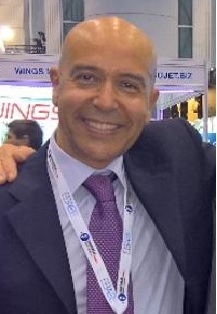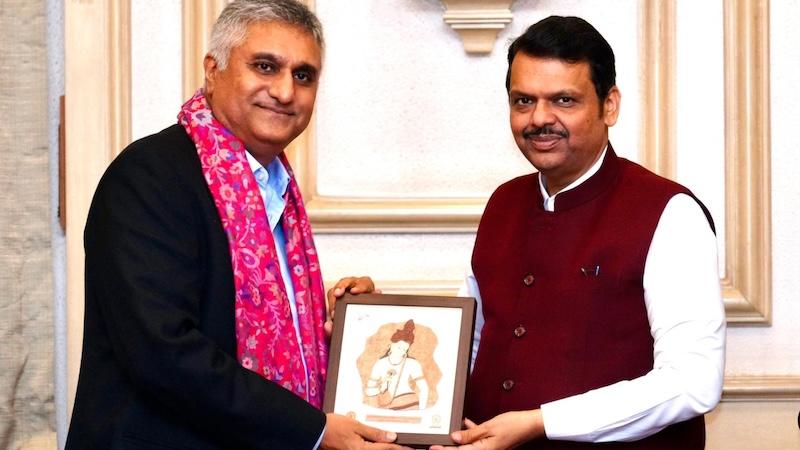Max Aerospace To Establish Helicopter Manufacturing Hub In Nagpur
Details
More Products & Services
Products & Services
Home - Aviation Group Marketing
Aviation Week Network
120 data points on over 156,000 commercial and business aviation aircraft, including military transports. Discover the most trustworthy resource for the complete aircraft history, plus ad hoc reports, month-over-month trend analysis and details on expected deliveries through 2050.
Aerospace | Aviation Week Network
Aviation Week Network
https://aviationweek.com/themes/custom/particle/dist/app-drupal/assets/awn-logo.svg
People

Andrea Rossi Prudente
Aviation Week Network

Anthony Lim
Aviation Week Network
Sales director

Becca Balmes
Aviation Week Network

Belinda Tan
Aviation Week Network

Brian Everstine
Aviation Week Network
Editor

Eddie Krankowski
Aviation Week Network
Assistant Manager, Tradeshows

erving dockery
Aviation Week Network

Lisa Tan
Aviation Week Network
Senior Marketing Manager

Mark Thomas
Aviation Week Network
Description
LE BOURGET—Max Aerospace & Aviation Ltd has signed a partnership agreement with the Government of Maharashtra to establish a helicopter manufacturing operation in Nagpur, a major city in central India.
“As India accelerates its journey toward self-reliance in aerospace and defense, our Nagpur facility will become a critical hub for the indigenous design, manufacturing and maintenance of helicopters tailored for both civilian and defense applications,” Max Aerospace Chairman Bharat Malkani tells Aviation Week at the Paris Air Show.
Formed in 1994, Max Aerospace is a Mumbai-based aviation engineering firm that specializes in the modification and maintenance of military aircraft.
“This deal has been in the making for a few years, and we've been working with our preferred OEM partner for some time,” Malkani says. The helicopter manufacturer and the model to be built in India will be announced in about a month, he adds.
“For us to be able to successfully build helicopters in India, we've been in deep discussions with all stakeholders to develop an ecosystem that works,” Malkani says. “Our state government in Maharashtra has been extremely supportive and forward-thinking to partner with us.”
The government of Maharashtra will be a stakeholder in the joint venture created to produce the helicopters. The international helicopter manufacturer will be a technology partner with Max Aerospace and potentially part of the joint venture company, Malkani says.
The plan calls for construction of the factory to begin by the end of 2026, pending the necessary regulatory approvals, with the first helicopters rolling off the line 18 months later, he says.
The production plan calls for 10-12 helicopters to be manufactured annually in the first phase of the venture's operation, with 50% of the aircraft—excluding the engine—manufactured in India, Malkani says.
“We are confident we will achieve more than 50% of local content in the aircraft from day one based on discussions with the various partners that we know will come on board with Max,” he notes. "There is a strong aviation ecosystem around the Nagpur region to draw upon."
“The real challenge is the engine, which will have to be delivered in the first phase from outside India. We have not had detailed discussions with the engine companies yet, but our belief is there is a business case to set up an engine factory in India. It will probably be the last part of the puzzle.”
Malkani has long harbored an ambition for Max Aerospace to enter the aircraft production game: “Max was founded with the intention one day of manufacturing aircraft. This is not just a project, it is a national commitment, and it is time India as a sovereign nation had indigenous aircraft production.”
The market demand for civil and military helicopters in India is expected to grow significantly in the coming two decades.
Under its “Make in India” initiative, the Indian government has for several years been encouraging overseas aerospace players to establish manufacturing operations in the country.
At present, state-owned Hindustan Aeronautics is India's predominant helicopter manufacturer, producing several models mainly for the Indian military.
Tata Boeing Aerospace Limited (TBAL), a joint venture between India's Tata Advanced Systems Ltd (TASL) and Boeing, manufactures the fuselage for the AH-64 Apache attack helicopter at its factory in Hyderabad.
In January 2024, Airbus Helicopters unveiled a partnership with Tata Advanced Systems Ltd to establish a production line for its H125 model. Bangalore was chosen as the site for the final assembly line in March this year.
“As India accelerates its journey toward self-reliance in aerospace and defense, our Nagpur facility will become a critical hub for the indigenous design, manufacturing and maintenance of helicopters tailored for both civilian and defense applications,” Max Aerospace Chairman Bharat Malkani tells Aviation Week at the Paris Air Show.
Formed in 1994, Max Aerospace is a Mumbai-based aviation engineering firm that specializes in the modification and maintenance of military aircraft.
“This deal has been in the making for a few years, and we've been working with our preferred OEM partner for some time,” Malkani says. The helicopter manufacturer and the model to be built in India will be announced in about a month, he adds.
“For us to be able to successfully build helicopters in India, we've been in deep discussions with all stakeholders to develop an ecosystem that works,” Malkani says. “Our state government in Maharashtra has been extremely supportive and forward-thinking to partner with us.”
The government of Maharashtra will be a stakeholder in the joint venture created to produce the helicopters. The international helicopter manufacturer will be a technology partner with Max Aerospace and potentially part of the joint venture company, Malkani says.
The plan calls for construction of the factory to begin by the end of 2026, pending the necessary regulatory approvals, with the first helicopters rolling off the line 18 months later, he says.
The production plan calls for 10-12 helicopters to be manufactured annually in the first phase of the venture's operation, with 50% of the aircraft—excluding the engine—manufactured in India, Malkani says.
“We are confident we will achieve more than 50% of local content in the aircraft from day one based on discussions with the various partners that we know will come on board with Max,” he notes. "There is a strong aviation ecosystem around the Nagpur region to draw upon."
“The real challenge is the engine, which will have to be delivered in the first phase from outside India. We have not had detailed discussions with the engine companies yet, but our belief is there is a business case to set up an engine factory in India. It will probably be the last part of the puzzle.”
Malkani has long harbored an ambition for Max Aerospace to enter the aircraft production game: “Max was founded with the intention one day of manufacturing aircraft. This is not just a project, it is a national commitment, and it is time India as a sovereign nation had indigenous aircraft production.”
The market demand for civil and military helicopters in India is expected to grow significantly in the coming two decades.
Under its “Make in India” initiative, the Indian government has for several years been encouraging overseas aerospace players to establish manufacturing operations in the country.
At present, state-owned Hindustan Aeronautics is India's predominant helicopter manufacturer, producing several models mainly for the Indian military.
Tata Boeing Aerospace Limited (TBAL), a joint venture between India's Tata Advanced Systems Ltd (TASL) and Boeing, manufactures the fuselage for the AH-64 Apache attack helicopter at its factory in Hyderabad.
In January 2024, Airbus Helicopters unveiled a partnership with Tata Advanced Systems Ltd to establish a production line for its H125 model. Bangalore was chosen as the site for the final assembly line in March this year.

Share
Recent Chats
Share via email
Future: handle WhatsApp here
Future: handle LinkedIn here
Future: handle Twitter here
SUBMENU HERE
Share via Chat
Copy Link

